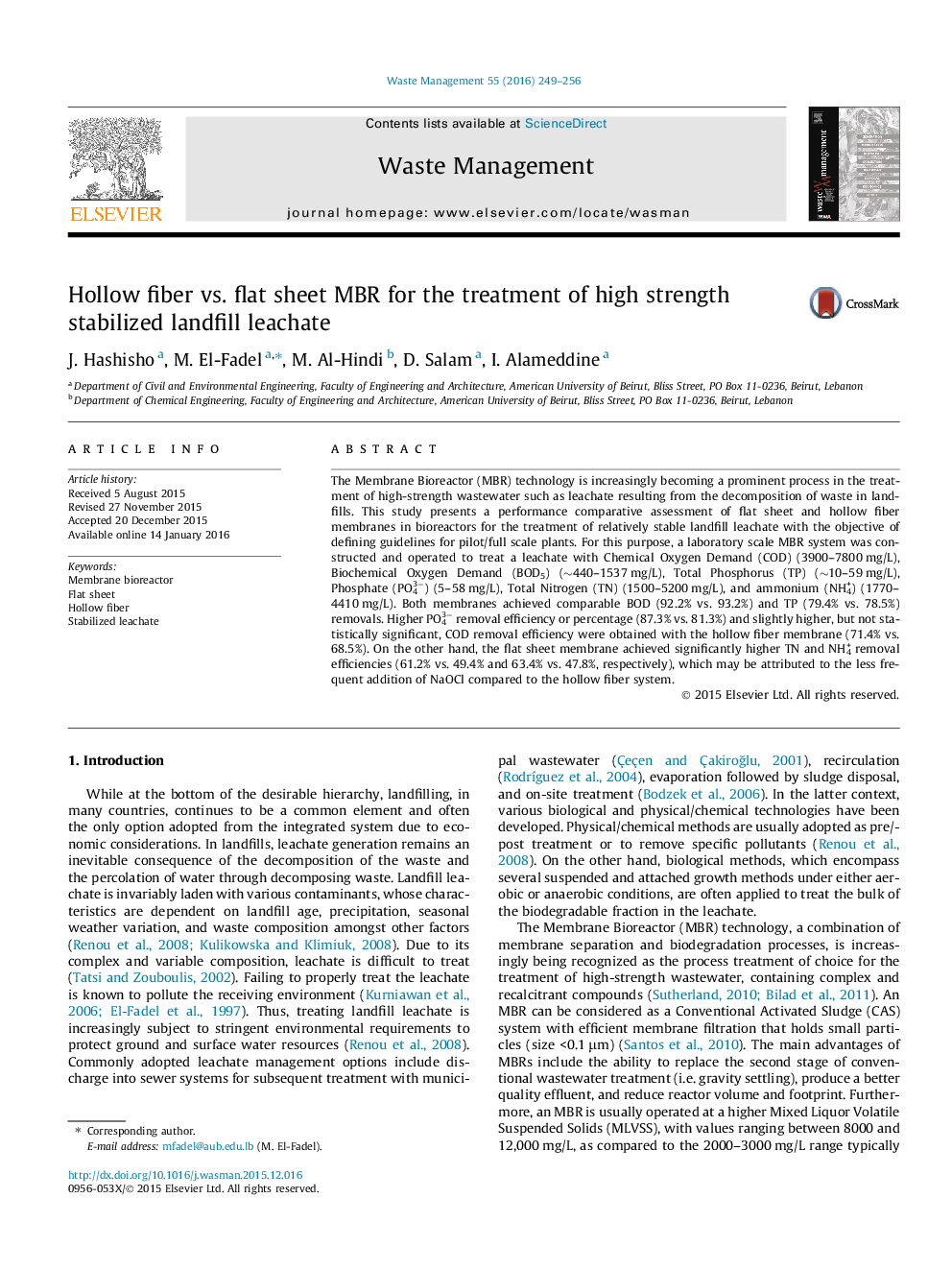| Article ID | Journal | Published Year | Pages | File Type |
|---|---|---|---|---|
| 4471200 | Waste Management | 2016 | 8 Pages |
•Flat Sheet (FS) and Hollow Fiber (HF) membrane bioreactors for landfill leachate treatment.•Comparable BOD and TP removal rates obtained with FS and HF.•FS exhibited higher TN and NH3 removal rates.•Higher PO43− removal rate achieved with the HF.•Slightly higher COD removal rate recorded with HF but not statistically significant.
The Membrane Bioreactor (MBR) technology is increasingly becoming a prominent process in the treatment of high-strength wastewater such as leachate resulting from the decomposition of waste in landfills. This study presents a performance comparative assessment of flat sheet and hollow fiber membranes in bioreactors for the treatment of relatively stable landfill leachate with the objective of defining guidelines for pilot/full scale plants. For this purpose, a laboratory scale MBR system was constructed and operated to treat a leachate with Chemical Oxygen Demand (COD) (3900–7800 mg/L), Biochemical Oxygen Demand (BOD5) (∼440–1537 mg/L), Total Phosphorus (TP) (∼10–59 mg/L), Phosphate (PO43−) (5–58 mg/L), Total Nitrogen (TN) (1500–5200 mg/L), and ammonium (NH4+) (1770–4410 mg/L). Both membranes achieved comparable BOD (92.2% vs. 93.2%) and TP (79.4% vs. 78.5%) removals. Higher PO43− removal efficiency or percentage (87.3% vs. 81.3%) and slightly higher, but not statistically significant, COD removal efficiency were obtained with the hollow fiber membrane (71.4% vs. 68.5%). On the other hand, the flat sheet membrane achieved significantly higher TN and NH4+ removal efficiencies (61.2% vs. 49.4% and 63.4% vs. 47.8%, respectively), which may be attributed to the less frequent addition of NaOCl compared to the hollow fiber system.
